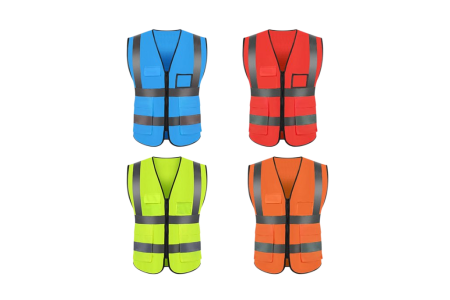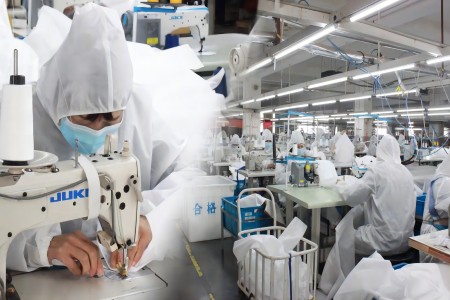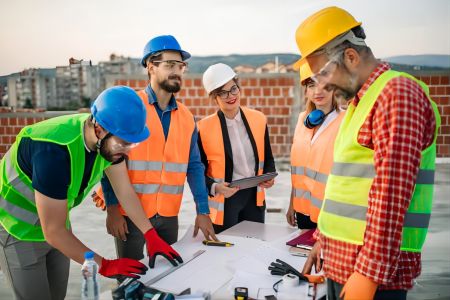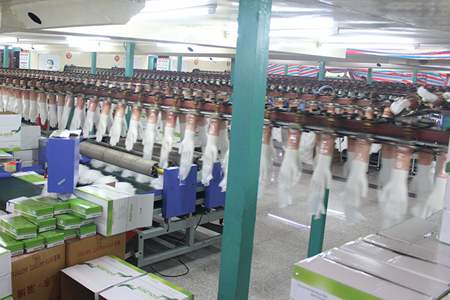2023/9/21

Why Safety Vests Are Essential in the Workplace
Safety vests are essential in the workplace to protect workers from hazardous materials and devices, as well as prevent injuries. They aren’t just for construction or manufacturing companies. Any business that needs to ensure that their employees are protected from dangerous conditions, machinery and other hazards inside of the office environment should have these vests on hand. In case you didn’t know, there are over 100 different types of chemical mixtures that can be found in a typical office setting by one’s second day on the job. That’s why it’s so important to keep your staff safe at work. Vests can hide our most recognizable assets such as our arms and legs for added protection against cuts, punctures and scrapes. There may not be anything more uncomfortable than having someone place a wet suit over you - but it can be absolutely lifesaving in some cases too!
What to Look for in a Safety Vest
- Durability - The core of any safety vest is the fabric. It should be thick and durable to prevent it from ripping if it’s caught. A vest that is too thin may tear if you’re caught between machinery or a fence that has barbed wires on it.
- Protection - There are many safety vest styles to meet your specific protection needs. It’s important to know the difference between styles that are designed to protect against cuts and punctures and those designed to protect against blunt force trauma.
- Fit - The last thing you need is to buy a vest that doesn’t fit right. Choosing the wrong vest style can be dangerous and ineffective at best.
- Comfort - Last but not least, make sure the vest is comfortable enough to wear all day.
Knowing When to Wear a Safety Vest
- Protective Clothing - You should always wear your safety vest when working with dangerous chemicals, tools or equipment. It is especially recommended for heavy equipment operators, machine operators, and construction workers.
- Construction Work - Construction workers may wear their safety vest when putting up scaffolding, installing manhole covers or working around heavy objects.
- Hazardous Material Handling - To be certain you’re protected from hazardous materials, it’s recommended that employees wear their safety vest near the materials.
- Protective Work - If you’re in protective work, such as fire and rescue, you may wear your safety vest all the time.
How to Put on Your Safety Vest
- Before putting on the vest, make sure to wash your hands. This is a good hygiene practice, but it’s also essential to protect yourself while wearing a safety vest. If you have gloves on, you won’t be able to properly handle any tools or equipment.
- Remove all your personal belongings, such as your badge, phone and wallet. You don’t want to risk getting caught between the cubicle wall and your items.
- Now you’re ready to put on your safety vest. Before you do, make sure you’re facing the right way. If you’re not, you risk getting caught between the wall and your back. This can cause serious injuries.
- Put on the vest one hand at a time and with care. Do not twist or snap the vest on. This could cause serious injury.
- Finally, make sure you’re facing the right way while you’re tightening the straps. You don’t want to get stuck between the cubicle wall and your back!
- There are a few things to remember when putting on your safety vest. Make sure you’re wearing it the right way. One hand should be in the front, and the other in the back. And make sure you’re facing the right way.
When Not to Wear a Safety Vest
- Protective Work - There are times when it’s best not to wear a safety vest, such as if you’re working on a roof or in construction.
- Hazardous Materials Handling - It may be best to keep your employees safe without wearing a safety vest in this situation. - Protective Work - If you’re in protective work, wearing your vest can slow you down and make you less efficient.
- Construction Work - Especially in construction, wearing a safety vest all the time isn’t recommended.
Conclusion
Vests are an essential part of any workplace health and safety strategy. They are designed to protect workers from hazards and injuries. They come in many styles, materials and levels of protection, so it’s important to choose the right one for your needs. While there are many styles and models to choose from, it’s important to know when to wear a safety vest and in which situations it is not recommended to use. Having the right safety vests for your employees can help protect them from hazardous materials and machinery. It can also prevent injuries if an employee gets caught between a fence or machinery and a wall.




 WhatsApp
WhatsApp
Send us your message
You can send an email asking for the price and detailed information of this product. We will reply you as soon as we receive your email